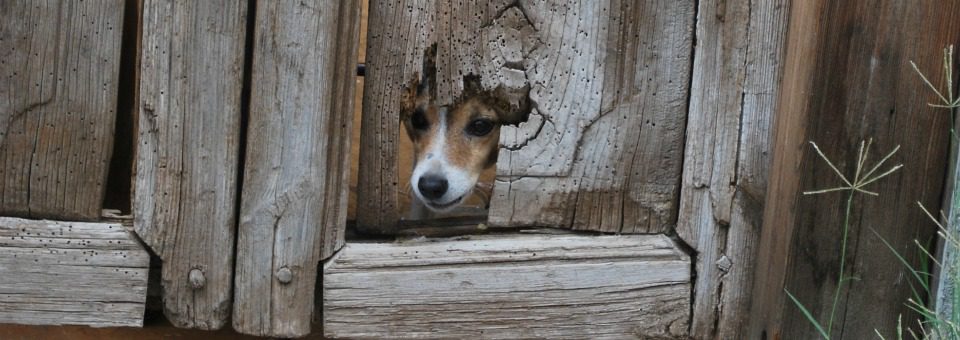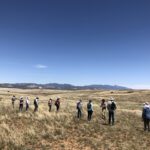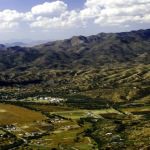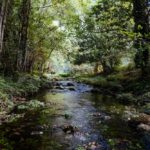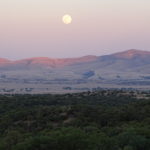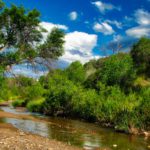Local, State, and National News that affects the Patagonia, Arizona Area
Click on the headline to go to the story. We post relevant Patagonia news regularly!
2017 Patagonia News
Business advocate accuses Patagonia mining watchdog of hypocrisy
A pro-mining advocate is taking aim at the leader of a local group opposed to Arizona Mining’s efforts to conduct large-scale mineral extraction in the Patagonia Mountains, accusing him of hypocrisy for allegedly using a U.S. Forest Service well without proper permission. In response, a member of the watchdog Patagonia Area Resource Alliance called the complaint an overreaction that shows the Canadian-owned mining giant’s frustration over PARA’s insistence that it abide by environmental regulation. Nogales International 6/20/2017
Forest Service gives crucial OK to Rosemont Mine
The U.S. Forest Service gave a major boost to the proposed Rosemont Mine today by approving a formal decision authorizing the project. Arizona Daily Star 6/7/2017
Forest Service Issues Premature Approval of Rosemont Mine
The U.S. Forest Service today signaled its approval of the proposed Rosemont open-pit copper mine, despite the fact that key permits and reviews are lacking. Center for Biological Diversity 6/7/2017
Outside expert called in on conflict of interest, email spats
The Patagonia Town Council was advised to create email addresses for elected officials and learned about conflicts of interest – especially as they pertain to small towns – during a special meeting last Wednesday. The workshop, hosted by Tom Belshe, deputy director of the League of Arizona Cities and Towns, was held in response to residents and councilmembers calling for a training after a resident accused Mayor Ike Isakson of having a conflict and the mayor said Councilman Michael Stabile sent inappropriate emails. Nogales International 5/30/2017
Test finds high levels of lead in youth center soil
The Patagonia Youth Enrichment Center will temporarily close so that environmental authorities can replace soil on its grounds that showed levels of lead higher than the state cleanup standard. Caroline Oppleman, spokeswoman for the Arizona Department of Environmental Quality (ADEQ), the agency that conducted the soil sample test, wrote in an email that “out of an abundance of caution, ADEQ is leading and funding an early response action in these areas used by the youth center that will remove affected soil and backfill these areas to eliminate potential exposure.” Oppleman said other metals found in the soil, like arsenic, will also be removed. Nogales International 5/30/2017
Scientists Struggle to Study Border Wall’s Effects on Wildlife
Arizona and Sonora, Mexico are one ecosystem—a diverse and rugged desert—but they’re split by hundreds of miles of fences and vehicle barriers. Scientists want to know how the current U.S.-Mexico border wall affects wildlife, and what will happen if that barrier is made more impenetrable. As KNAU’s Melissa Sevigny reports, doing research in this region is fraught with complications. KNAU 5/17/2017
Study: Trump’s Border Wall Threatens 93 Endangered Species
President Trump’s border wall threatens 93 endangered and threatened species, including jaguars, ocelots, Mexican gray wolves and cactus ferruginous pygmy owls, according to a new study by the Center for Biological Diversity. The study also found that 25 threatened or endangered species have designated “critical habitat” on the border, including more than 2 million acres within 50 miles of the border. Center for Biological Diversity 5/16/2017
Forest Service to decide on Rosemont Mine in early June
After a decade of planning, debates and numerous studies and reports on the Rosemont Mine, one of two key decisions on the proposed project is due early next month.
The U.S. Forest Service announced in the Federal Register on Monday that it expects the Coronado National Forest supervisor will sign the decision then on the $1.9 billion project proposed for the Santa Rita Mountains southeast of Tucson. Arizona Daily Star 5/8/2017
Financial report: Hudbay plans to develop three open pit mines in Santa Rita Mountains
A detailed analysis in an online financial publication is reporting that Toronto-based Hudbay Minerals is planning to develop three open-pit copper deposits at its proposed Rosemont Mine project in the Santa Rita Mountains on the Coronado National Forest southeast of Tucson.
Hudbay is currently seeking federal approval to construct a single massive open pit mine that would be a mile in diameter and more than a half-mile deep. The waste rock and mine tailings from the mine would be dumped on more than 3,000 acres of Coronado National Forest. Rosemont Mine Truth 5/3/2017
Fire’s ash may pose hazard to wildlife in conservation area near Tucson
Large patches of brown leaves dotted the aging cottonwood trees lining Empire Gulch Tuesday morning. Below, blackened fields of grass alternated with streaks of white ash on the ground. Many mesquite trees wore blackened surfaces. But it will be a while before the significance of this superficial scarring of the just-ended Sawmill Fire becomes clear along the gulch or elsewhere in the 42,000-acre Las Cienegas National Conservation Area, officials say. Arizona Daily Star 5/3/2017
AMI Seeks to Purchase Public Land
Arizona Mining Inc. (AMI), a Canadian mineral exploration and development company, has recently submitted a Small Tracts Act application to purchase 14 acres of public land adjacent to their private patented lands on the east side of Harshaw Road, situated in the Coronado National Forest. The Forest Service, which has discretion to deny their request, is currently evaluating the application according to Daisy Kinsey, Sierra Vista District Ranger, Coronado National Forest. The Forest Service advised Patagonia Area Resource Alliance to file a Freedom of Information (FOIA) request in order to learn more about AMI’s application.
AMI has about 20,000 acres of patented and unpatented claims approximately nine miles south of the town of Patagonia at the intersection of Harshaw and Flux Canyon roads. AMI acquired 152 acres of private patented land in 2006 and 300 acres in 2016 and has drilled 331 holes over the past ten years on these two pieces.
Environmental protections for private lands are substantially different from the protections required for federal lands. Those who oppose this sale of public lands may contact the Coronado National Forest at 4070 S. Avenida Saracino, Hereford, AZ 85615 or email ckinsey@fs.fed.us. Patagonia Regional Times May 2017
Paton Center Welcomes Spring Visitors
A dozen avid aviary admirers, acting on the advice that the early bird gets the worm, arrived well before the official opening time of 7:00 a.m. at the Paton Center’s Spring Wing Fling on Saturday, April 8. The “worm” in this case was not only sightings of the winged wonders that make the Paton Center for Hummingbirds one of the premier destinations in the entire realm of birdwatching, but hot coffee and donuts as well, for those willing to lower their binoculars long enough to grab a bite or a drink. Patagonia Regional Times May 2017
Tirion Featured Speaker at FOSC Annual Meeting
Friends of Sonoita Creek (FOSC) members and guests gathered in Cady Hall on April 15 to review the organization’s activities over the past year and to hear Kate Tirion, owner of Deep Dirt Farm and its affiliated institute, describe her journey from childhood in Wales to her present life as a highly-respected practitioner and teacher of permaculture. Patagonia Regional Times May 2017
Water Pollution
Did you know that while 70% of the Earth’s surface is covered in water, only 2.5% of that is freshwater? The rest is saline and ocean-based. With most freshwater trapped underground or in glaciers, only 1% of that is accessible by humans. Furthermore, of earth’s 0.025% of precious water that we should actually be able to drink, tragically much has been rendered useless by pollution. From improper sanitation to careless dumping of sewage into rivers to just plain accidents, such as the Deepwater Horizon oil spill, the world’s supply of water is getting filthier each day. Patagonia Regional Times May 2017
Town councilman’s emails on mining cause flap
Patagonia Mayor Ike Isakson said Councilman Michael Stabile sent two personal emails in which he inappropriately mentioned his role on the Patagonia town council while discussing mining issues, and he wants the council to consider a policy to address such communications. Nogales International 4/28/2017
Our Turn: Feds have no clue how to save Arizona jaguars (but we do)
Arizona needs female jaguars to sustain the population. But the feds continue to drag their feet without explanation. Arizona Republic 4/26/2017
Grijalva joins suit targeting border wall proposal
A lawsuit filed Wednesday in U.S. District Court in Tucson by U.S. Rep. Raul Grijalva and the Center for Biological Diversity takes aim at the Trump administration’s proposed border wall and other immigration enforcement measures, calling for an investigation of the proposal’s environmental impacts. Nogales International 4/14/2017
Grijalva, wildlife group file lawsuit over Trump’s proposed border wall
A conservation group and U.S. Rep. Raúl Grijalva have filed what they say is the first federal lawsuit against the proposed border wall. The lawsuit was filed Wednesday in Tucson by Grijalva, D-Arizona, and the Center for Biological Diversity. Wildlife conservationists say the wall would be detrimental to rare animals such as jaguars and ocelots that are known to traverse the international line. Arizona Daily Star 4/12/2017
Arizona Mining says it hopes to begin production in 2020
Arizona Mining announced that it expects to begin the state permitting process and break ground on a tailings, or waste material, facility this year. In a news release issued April 3, the Canadian-based company said it hopes to begin extracting zinc, lead and silver from its Hermosa Project property in the Patagonia Mountains by 2020. The news release said the company needs to secure state permits such as aquifer protection and air permits, a process expected to take 12-18 months. Nogales International 4/11/2017
Pristine section of Sonoita Creek is ‘extremely rare,’ expert says
A pristine portion of Sonoita Creek that was discovered last fall is providing local environmentalists with inspiration as they work to restore eroded sections of the stream. Nogales International 4/7/2017
Feds want to ease jaguar protections to build border wall
While one branch of the U.S. government reviews a plan to bring back the endangered jaguar, another branch wants to waive legal protections for the species to build the border wall. Arizona Daily Star 3/30/2017
Public given more time to comment on plans to clean up old mine sites
The Coronado National Forest has indefinitely extended the public comment period for a plan to clean up two abandoned mines north of Patagonia after evaluation of the area indicated the need to develop an additional alternative. Nogales International 3/28/2017
Environmental groups say more research is needed on reintroducing jaguars to Southwest
Reintroducing the jaguar into the United States is an idea whose time has come, says a Tucson-based environmental group. A national conservation group says it’s at least an idea worthy of more analysis than the federal government has given it.
The U.S. Fish and Wildlife Service, which manages endangered species, doesn’t agree. It says the best use of its resources is to focus on what it sees as the jaguar’s core areas in Mexico, not on “secondary” jaguar habitat in the southwestern U.S. Arizona Daily Star 3/21/2017
Conservationists: Wild jaguars can make US comeback
Conservationists are making another push to get federal wildlife officials to devote more resources to the re-establishment of wild jaguars in the U.S. Only three jaguars have been seen in recent years, but conservationists like Rob Peters, a senior representative for Defenders of Wildlife, believe they can call the United States home again with a series of conservation measures including translocation and establishing a larger habitat area by federal officials. ABC 15 3/21/17
Rosemont, homebuilders would benefit from Trump’s proposed water rule change
The proposed Rosemont Mine and real estate projects across Southern Arizona would be big winners if President Trump’s proposed change to the “Waters of the U.S.” rule goes through. Changing the rule as Trump has proposed would remove costly, time-consuming yet environmentally protective requirements for landowners to get federal permits for building projects near many Southern Arizona washes and streams. Most affected would be ephemeral streams and washes, which carry water only after big rains. Arizona Daily Star 3/11/2017
Episode 306: Face to Face With a Jaguar
Most commonly associated with South and Central America, jaguars are also native to Arizona, and there is limited knowledge about the large cat. But that knowledge has been growing in the last 30 years along with an increasing number of jaguar sightings in the U.S., including in Arizona along the U.S.-Mexican border. Arizona Public Media 3/11/2017
Comments sought on mine cleanup near Patagonia
The Coronado National Forest is seeking public comment on a plan to clean up two abandoned mines north of Patagonia. The CNF has prepared a draft report of the engineering evaluation and cost analysis for the cleanup of the Hosey and Dixie mines in the Mansfield Canyon watershed. The report concludes that the sites have environmental concerns related to arsenic, lead and antimony. The recommended alternative is to remove, relocate and perform on-site encapsulation of mine waste and soil. Nogales International 3/10/2017
Public input sought on draft report on abandoned mines in Santa Cruz County
Officials with the Coronado National Forest are requesting public comment on the Draft Report of the Engineering Evaluation/Cost Analysis for the Mansfield Canyon Watershed Mines: Hosey Mine and Dixie Mine (Site), two abandoned mines located on the Nogales Ranger District, Santa Cruz County, Nogales, AZ. All public comments are due by close of business, Monday, March 20, 2017. Comments will also be accepted by sending an e-mail to: gpedrego@fs.fed.us (please reference “Mansfield Canyon Mine Sites EE/CA” in the subject line). Tucson News Now 3/8/2017
Rare jaguar sighted in mountains of Arizona
Wildlife officials say they have evidence of a rare jaguar sighting in the United States, giving conservationists hope that the endangered cat is re-establishing itself here. The U.S. Fish and Wildlife Service released a photo Thursday from a trail camera that was taken in November and recently retrieved. It shows the spotted cat wandering through the Dos Cabezas Mountains in Arizona about 60 miles north of the U.S.-Mexico border. Fish and Wildlife spokesman Jeff Humphrey says it’s the farthest north of the border that a jaguar has been seen in decades. Daily Courier 3/6/2017
Another jaguar discovery in Southern Arizona adds to border-wall debate
The discovery of a jaguar in the Dos Cabezas Mountains near Willcox marks the third time since 2015 a new one has been photographed in Arizona, and the seventh time the elusive cat species has been documented in Arizona or New Mexico in the last 21 years.
But this new addition to the region’s known jaguars, disclosed Thursday, does little to quell the longstanding dispute between state and federal biologists and conservationists over their significance in Arizona. The discovery has also amplified environmentalist concerns about President Trump’s plans to build a fence or wall spanning the entire U.S.-Mexican border. Arizona Daily News 3/3/2017
Mining workers provide boon to Patagonia’s service sector
Drilling opponents, however, argue that the economic benefit to the town will be short lived and that full-fledged extraction would ultimately harm the tourist industry.
“There’s no mine ever that’s kept a small town in a boom situation forever. It’s a short-term thing,” said Cliff Hirsch, president of mining watchdog Patagonia Area Resource Alliance (PARA). “They come in here and they take minerals, and when they’re gone, they’re gone.” Nogales International 3/3/2017
New jaguar photographed in Southern Arizona; third seen here since ’11
A new jaguar has been documented to exist in Southern Arizona — the second in the past four months and the third since 2011. It’s the seventh jaguar documented to have been in the Southwest since 1996, after only one was known to occur in this region in the previous 20 years. The jaguar was photographed on Nov. 16 in the Dos Cabezas Mountains in Cochise County, about 60 miles north of the U.S.-Mexican border, Arizona Game and Fish officials said in a news release Thursday morning. The jaguar’s sex couldn’t be determined by the photo, taken on a U.S. Bureau of Land Management-owned trail camera, Game and Fish said. Arizona Daily News 3/2/2017
A Closer Look: Border Wall Impact on Wildlife
President Donald Trump made the border wall a central platform of his presidential campaign and within his first 7 days in office signed an executive order to build a wall along the remaining U.S.-Mexican border— all 1,254 miles of it. In addition to the effects on human communities, the wall will harm a diversity of wildlife and vast expanses of pristine wildlands and waterways, including critical wildlife movement corridors. Harm will be amplified by wall-related infrastructure and activities, including construction, improvement and maintenance of border patrol roads, camps and facilities, removal of vegetation, and traffic from patrols. Regrettably, all border wall construction can be accomplished under waivers allowed by the 2005 REAL ID Act. The act is sweeping, allowing the waiver of any federal, state, or local laws. Defenders of Wildlife 3/1/2017
EPA Delays Rule for Miners to Give Cleanup Assurances
Facing pushback from industry and Republicans in Congress, the U.S. Environmental Protection Agency delayed on Friday a proposal that would require mining companies to show they have the financial wherewithal to clean up their pollution so taxpayers aren’t stuck footing the bill. Fortune 2/25/2017
El Jefe, Arizona’s mighty jaguar, is missing in action
El Jefe, Tucson’s lone male jaguar, caught the attention of Arizonans while residing in a tree in Southeastern Arizona.
For three years, pictures from trail cameras flooded conservationists’ computers and proved that El Jefe had created his home in the Santa Rita Mountains.
It’s been a year since trail cameras caught footage of the wandering jaguar, and the news is not good. El Jefe is missing. Arizona Republic 2/17/2017
El Jefe the Jaguar Is Also Not a “Bad Hombre”
Just about a year ago, a YouTube sensation emerged from an unlikely place: the rugged wilderness of Arizona’s Santa Rita mountains. He made just one video, but those 41 seconds of footage—compiled from remote motion-sensor cameras—were enough to solidify his claim to fame as the only known wild jaguar living in the United States. A group of Tucson schoolkids won a nationwide naming contest, christening the big cat El Jefe, Spanish for “The Boss,” a nod to his apex predator status and Mexican heritage.
El Jefe, however, has recently become headline worthy for another reason. On January 25, our newly elected president signed an executive order calling for “the immediate construction of a physical wall on the southern border.” Now our beloved boss cat represents the threat that barrier would pose to wildlife. onEarth 2/15/2017
How the Proposed Wall Across Mexico Will Impact the Endangered Jaguar Population
Countless species are already struggling to survive, and now one that has been endangered in the U.S. for over three decades — the jaguar — is facing the possibility of a 2,000-mile barrier that could have a devastating impact on a species as a whole. With a nearly nonexistent population in the U.S. and a struggling population in Mexico, the jaguar is already paying the price for decades of human interference. One Green Planet 2/14/2017
Town tables trucking regulations due to legal fears
After months of discussion, the Patagonia Town Council tabled a vote on new truck regulations last week after mining representatives said they would have a lawmaker challenge the ordinance, and residents expressed fear of losing state funds.
“We wanted to investigate (the ordinance) further, make sure that whatever we propose is not in violation, is not unconstitutional,” Vice-Mayor Andrea Wood said during a phone interview last Friday.
The new ordinance would have allowed heavier trucks to drive on Patagonia’s roads, but it restricted the number of trips they can take. While councilmembers have cited public safety and road quality as the catalyst for the revised rules, this issue is also tied to Patagonia’s mining debate because many of the heavy trucks passing through town are heading to mining projects.
Wood said that after Town Manager David Teel and Town Attorney Michael Massee met Feb. 6 with Greg Lucero, vice-president for community and government affairs at Arizona Mining, and his lawyer, Teel alerted the council to an Arizona law that allows lawmakers to ask the state attorney general to investigate town ordinances. If an ordinance is found unconstitutional and is not revised in 30 days, the state can withhold funds from the town. Nogales International 2/13/2017
Where the wild things swim — again
One clear November morning in 2015, Arizona Department of Game and Fish biologist Ross Timmons struggled to match the morphology of a fish that he’d caught in the shin-deep Santa Cruz River with that of the western mosquitofish, an exotic species that flourishes in Arizona’s waterways. “All of a sudden I realized: My God, we’ve got a Gila topminnow,” Timmons said. He’d caught a federally endangered fish, an exciting—and long awaited—find. High Country News 2/9/2017
Where wildlife is up against the wall
The Santa Rita Mountains, a chain of forested peaks that rise from the desert southeast of Tucson, Arizona, rank among the Southwest’s premier biodiversity hotspots. The region’s most notable resident is a 160-pound, Mexican-born male jaguar called El Jefe, who was first spotted on American soil in 2011. While El Jefe rules the Santa Ritas, he’ll likely have to return to Mexico to produce an heir. The United States hasn’t hosted a verified female jaguar since 1963.
For El Jefe and the border’s other wild inhabitants, searching for love is a complicated proposition. The United States shares a 2,000-mile border with its southern neighbor, nearly 700 miles of which is blocked by fences and vehicle barriers. Still, it remains relatively crossable for wildlife; some stretches of the Santa Ritas, for instance, are too rugged for fencing. But the border’s permeability to animals may not last. High Country News 2/7/2017
Upgrades in the works at popular backyard birding site in Patagonia
A world-famous backyard hummingbird feeding station in Patagonia has temporarily closed while the site is enhanced for the birds and humans that flock to see them. Nogales International 1/31/2017
Council OKs water study application, tweaks truck rules draft
Patagonia’s Flood and Flow Committee received permission to apply for a grant to fund a watershed study during Wednesday evening’s well-attended town council meeting.
Also during the meeting, councilmembers made what they said will be the final changes to truck regulations following debates surrounding the possibility of mining extraction beginning near the town. Nogales International 1/27/2017
Trump’s Border Wall Will Harm People, Halt Recovery of Jaguars, Other Wildlife
President Trump is expected to announce today that his administration will pursue a wall along the U.S.-Mexico border, a project that would perpetuate human suffering, harm border communities and halt the cross-border movement of jaguars, ocelots, wolves and other wildlife. Among animals, the wall would be particularly harmful to highly endangered jaguars. Two jaguars have been photographed north of the border in recent years, but the U.S. population will never reestablish if migration from the small population in northern Mexico is blocked. Center for Biological Diversity 1/25/2017
Yellow-Billed Cuckoos Found in Wider Arizona Habitat Range
Audubon Arizona survey efforts identified additional types of Cuckoo habitat in Arizona’s Important Bird Areas. The Birding Wire 1/18/2017
Mining advocate, environmentalist offer contrary outlooks on Trump administration
A proponent of mining in the Patagonia Mountains hopes President-elect Donald Trump’s administration will ease up on regulation of the industry while an environmentalist fears the new government will be a disaster for the region’s environment and human population. Nogales International 1/17/2017
Trump’s Wall Threatens Last Jaguars in the U.S.
Jaguars need vast amounts of land to survive and reproduce. There are only two males of the species left in the United States—and the closet known females are on the Mexican side of the border. Daily Beast 1/16/2017
Rosemont Mine would cause water quality violations, Corps district says
The proposed Rosemont Mine would “cause or contribute to” violations of Arizona water quality standards and trigger “significant degradation” of federally regulated washes, said a lower-level Army Corps of Engineers office in recommending against granting it a key federal permit.
In a recent letter to the mine company’s general manager, a top Corps official for the first time revealed these and other reasons underlying that office’s recommendation last year to deny a federal Clean Water Act permit for the $1.5 billion, Tucson-area project. Arizona Daily Star 1/14/2017
Water troubles continue for residents east of city limits
“I’ve been without water for two months, and I have three little kids 2, 4 and 5 at home,” Francisco Martinez said, making a plea to the Santa Cruz County Board of Supervisors last Wednesday to help him cut through the red tape and get water flowing again at his home on North River Road. Nogales International 1/10/2017
Walks highlight a birdwatching mecca
Decked out in khaki and hiking boots, armed with birding field guides and binoculars, and wearing every sort of pack imaginable – backpack, fanny pack, lumbar pack – around 20 people flocked to the Sonoita Creek Trailhead at Patagonia Lake State Park for a guided bird walk Friday morning.
They came from as nearby as Patagonia and Sonoita, and as far away as Pennsylvania and Toronto, Canada. Many of the out-of-towners have camped their mobile homes within the park, located four winding miles northeast of marker 12 on Highway 82. Nogales International 1/10/2017
Tequila makers, volunteers lift endangered bats off the mat
An unusual alliance of volunteer researchers and tequila makers have helped rescue a crucial American Southwest pollinator known as the lesser long-nosed bat from the brink of extinction, according to U.S. wildlife managers who want the bat removed from the endangered and threatened species list. Tucson Sentinel 1/9/2017
Rosemont decision will come under Trump, but OK isn’t a done deal
A key permit decision on the proposed Rosemont Mine — which would be the country’s third-largest copper mine — won’t be made until after President-elect Donald Trump takes office. The Army Corps of Engineers said last week it doesn’t expect to issue its decision on a Clean Water Act permit for the mine until after Jan. 20, when Trump is inaugurated. It declined in response to a question from the Star to give a timeline for the decision. Arizona Daily Star 1/7/2017
Company retreats — for now — on project in Ariz. forest
A Canadian mining company has withdrawn its bid to explore a federal tract for zinc, lead and silver at the U.S.-Mexico border.
But Arizona Mining Inc. isn’t abandoning its hopes of tapping its 13,654 acres of mining claims in the Coronado National Forest southeast of Tucson.
The company’s planned Hermosa-Taylor mine is opposed by environmental groups concerned about the project’s impact on America’s only known jaguar, called El Jefe, and other endangered and threatened species — ocelots, lesser long-nosed bats, Mexican spotted owls and western yellow-billed cuckoos — that live in moist mountain forests towering over the desert. E & E News 1/6/2017
New councilmembers in Patagonia recognize the responsibility of their service
Michael Stabile, Ron Reibslager and Melissa Murrietta were sworn in as Patagonia Town councilmembers on Wednesday evening, and the first meeting of the new council went smoothly.
“Our first vote was 4-0,” Mayor Ike Isakson joked when accounts payable was unanimously approved.
Even so, members acknowledged that future meetings could be tense due to strong opinions over mining projects in the Patagonia area. Nogales International 1/6/2017
Mayor rejects allegation of conflict of interest on truck rules
An environmental activist accused Patagonia Mayor Ike Isakson of having a conflict of interest when it comes to local truck regulations, but the mayor said legal authorities have given him a green light on the issue.
“Respectfully speaking, you shouldn’t even be discussing this because you have a conflict,” Carolyn Shafer told the mayor during a discussion of the regulations at last Wednesday’s town council meeting. Shafer, a board member with the Patagonia Area Resource Alliance (PARA), a mining watchdog organization, also accused the council of “bending over backwards” to accommodate heavy trucks.
The issue of heavy truck traffic is tied to Patagonia’s mining debate because many of the trucks passing through town are heading to mining projects. Nogales International 1/3/2017
